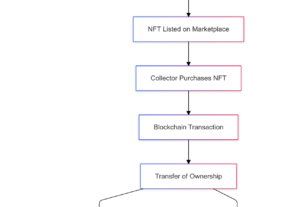What is a Bull Call Spread?
A bull call spread is an options trading strategy that involves buying and selling call options with different strike prices but the same expiration date and underlying asset. Here’s how it works:
- Boosting Financial Success: The Power and Strategies of Brand Awareness in Finance and Investment
- Top Assurance Roles in Finance: Understanding Titles and Responsibilities
- Understanding Adjudication in Finance: Streamlining Loan Decisions and Dispute Resolution
- How Advanced Internal Rating-Based (AIRB) Enhances Credit Risk Management in Banking
- How Cash Balance Pension Plans Work: Benefits, Contributions, and Tax Advantages
-
You buy a call option with a lower strike price.
Bạn đang xem: How to Profit with a Bull Call Spread: A Comprehensive Guide to This Popular Options Strategy
-
You sell a call option with a higher strike price.
Both options have the same expiration date and are based on the same underlying asset. This setup is known as a debit strategy because you pay more for the lower strike call than you receive for selling the higher strike call.
It’s important to distinguish between a bull call spread and a bull put spread. While both are bullish strategies, they differ significantly in their construction and risk profile. A bull put spread involves buying and selling put options and is typically a credit strategy, meaning you receive more premium than you pay.
How to Set Up a Bull Call Spread
Setting up a bull call spread involves several key steps:
-
Choose an Underlying Asset: Select an asset that you expect to rise moderately in price. This could be a stock, ETF, or index.
-
Select the Expiration Date: Pick an expiration date that aligns with your market outlook. If you expect the asset to rise within a specific timeframe, choose an expiration date that corresponds to this period.
-
Determine Strike Prices: Buy a call option at a lower strike price and sell a call option at a higher strike price. The difference between these strike prices will affect your net debit and potential profit.
-
Monitor Price Movement: Keep an eye on the underlying asset’s price movement as the expiration date approaches. This will help you decide whether to close or adjust your position.
Monitoring is crucial because it allows you to react to changes in market conditions and adjust your strategy accordingly.
Understanding the Costs and Premiums
The net debit is a critical concept in understanding the bull call spread. It is calculated as follows:
- Net Debit = Premium Paid for Lower Strike Call – Premium Received for Higher Strike Call
This net debit affects both your breakeven point and your maximum profit potential. Here’s an example to illustrate this:
Xem thêm : Understanding Adjudication in Finance: Streamlining Loan Decisions and Dispute Resolution
Suppose you buy a call option with a strike price of $50 for $5 and sell a call option with a strike price of $55 for $3. Your net debit would be $2 ($5 – $3). This means your breakeven point would be $52 ($50 + $2), and your maximum profit would be capped at $3 ($55 – $50 – $2).
Maximum Profit and Loss
To calculate the maximum profit of a bull call spread:
-
Maximum Profit = Difference Between Strike Prices – Net Debit
-
Maximum Profit = ($55 – $50) – $2 = $3
For you to achieve this maximum profit, the underlying asset’s price must rise above the higher strike price ($55) at expiration.
On the other hand, the maximum loss is limited to the net debit paid if the underlying asset’s price remains below the lower strike price at expiration. In our example, if the asset’s price stays below $50, your loss would be capped at $2.
Breakeven Analysis
The breakeven point is another important metric for evaluating your trade’s performance:
-
Breakeven Point = Lower Strike Price + Net Debit
-
Breakeven Point = $50 + $2 = $52
If the underlying asset’s price reaches this breakeven point at expiration, you will break even on your trade.
Managing the Bull Call Spread
Managing a bull call spread involves continuous monitoring as the expiration date approaches:
-
Monitor Price Movement: Keep track of how close the underlying asset’s price is to your strike prices.
-
Close or Adjust: You have two main options for closing your position:
-
Xem thêm : Mastering a Balanced Investment Strategy: Expert Tips for Optimal Returns
Exercise your options if they are in-the-money.
-
Close out your position by selling your long call and buying back your short call.
-
-
Adjust Based on Market Conditions: If market conditions change or if your outlook shifts, consider adjusting your strategy by rolling over to different strike prices or expiration dates.
Comparative Analysis with Other Strategies
When deciding between different bullish strategies, it’s helpful to compare them:
-
Buying a Single Call Option: This involves higher risk but potentially higher returns compared to a bull call spread.
-
Bull Put Spread: This strategy involves selling put options and is generally less expensive but offers lower potential returns.
Each strategy has its advantages and disadvantages regarding risk exposure and potential returns. A bull call spread offers a balanced approach that can be more appealing for traders looking for moderate gains with managed risk.
Real-World Example
Let’s use an example involving real-world data to illustrate how to set up and manage a bull call spread:
Suppose you expect the S&P 500 index (SPX) to rise moderately over the next few months. You decide to set up a bull call spread using SPX options.
-
Buy one SPX call option with a strike price of 4,000 for $150.
-
Sell one SPX call option with a strike price of 4,100 for $100.
Your net debit would be $50 ($150 – $100). Your breakeven point would be 4,050 (4,000 + $50), and your maximum profit would be capped at $50 (4,100 – 4,000 – $50).
As you monitor the trade, if SPX rises above 4,100 at expiration, you’ll achieve your maximum profit of $50.
Nguồn: https://gapinsurance.click
Danh mục: Blog




